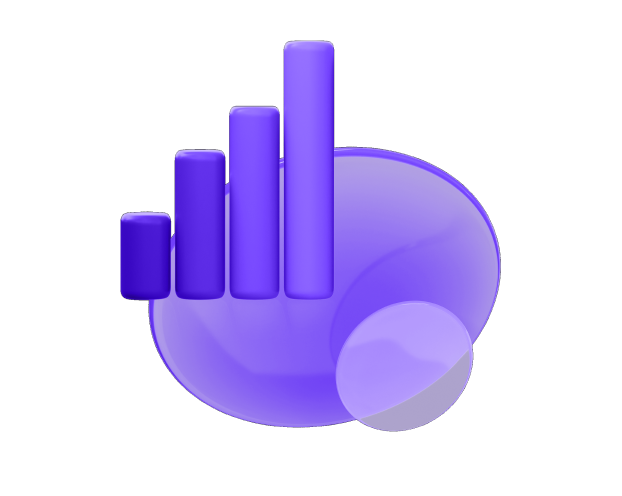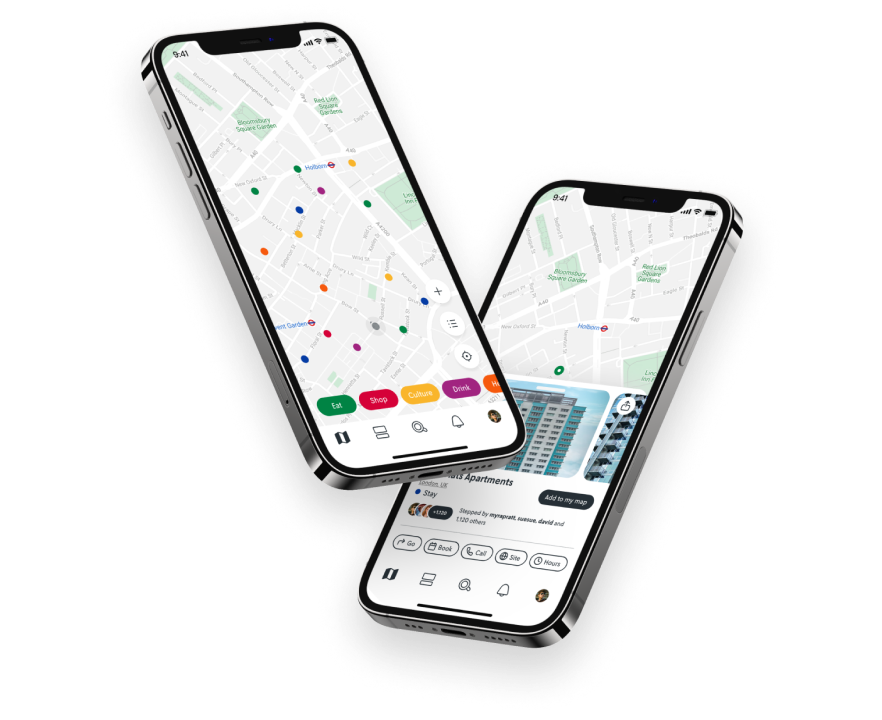Product Strategy Consulting
Your path to product success
Launch a new product on the market and win your future customer’s interest (and loyalty!) with a solid digital product strategy and a long-term innovation plan.
Consult your idea

What you get
With our UI design services, you receive more than just attractive interfaces – you gain a partner committed to understanding your business and users.
Start project
Reliable partnership model
Ensure your project’s success with a dedicated team of experts. Let’s ask difficult questions and dig deeper to truly understand the essence of your product. We don’t just work for you; we partner with you!

Architecture & technology consultations
Whatever your needs are, we ensure the technology perfectly aligns with your product. Our Project Technical Team provides comprehensive system setup, technology health checks, and enhancement support. Gain a technical perspective and help your team make better decisions.

Product care & scale
Let us handle the weight of product strategy. We’ll focus on your target audience, craft robust business models, provide market insights, and set clear milestones. All to ensure your product stays on track from inception to success.

The innovation-driven experts onboard
By partnering with us, you access the forefront of technological innovation, from Generative AI and NLP to machine learning. Leverage the latest advancements to stay competitive and deliver unmatched value to your customers.
1 of 4
Discover your unique journey from idea to a meaningful product and constant innovation
Launch with confidence
Accelerate product release by defining its reason-to-believe, assessing feasibility, and setting a budget for launch and growth. Partner with Miquido’s strategy experts to explore key trends and opportunities.
Scale-up in the right direction.
Expand the market by implementing growth-hacking methods and improving UX. Learn and discover new opportunities with insightful market research, gathered end users and consumer data, and hypothesis quick validations.
Receive constant support
Have a real partner on your side throughout the discovery, testing and growth journey. Ensure the right product’s development in all aspects: technical, software, innovation and market needs fit.
1 of 3
Available for projects
Struggling to decide?
Connect with us to see if
we’re the right fit.
We are strategy experts who care about your product’s success and are here to support you throughout the process.
Book consultationComplete technical documentation
Time is crucial in any project, but we never compromise on quality. We ensure clean, well-documented code and consider refactoring an essential part of every app development lifecycle, keeping your project scalable and future-proof.
Proven track record
Over the past 12 years, our teams have contributed to the creation of over 250 innovative digital products for brands such as Warner, Dolby, Skyscanner and TUI.

Long-term partnerships
While we love MVPs, most of our client partnerships are long-term and last on average 5 years.

Transparent cooperation
Clear project scope and requirement definitions, effective communication channels, regular progress reports, risk and change management and open feedback are the pillars of the custom app development process at Miquido.

Holistic approach
Drive your business forward with our digital transformation consultancy, providing expert guidance in business strategy, product design, and full-stack development.
Team seniority
With most of our team at senior or regular levels, you receive the right combination of experience and unconventional thinking.

Here’s what
our clients say
We’ve shared our story with you. Now, hear directly from our clients about their experiences and the impact of our work.
See our portfolio
“The product design element in our initial workshop, alongside the rest of the team, was vital in helping us to shape our final product. (…) The Miquido team were very well versed on best practices and flexible in accommodating our wishes. Working with the product design team was a smooth and seamless partnership!”

“At the beginning of cooperation with Miquido, we had a lot of ideas for product development, but no specific plan. The two-day workshop helped us to broaden the perspective, sort out areas and create a backlog of tasks for further work on the mobile app.”
1 of 2
What are the stages of the product strategy process?
This initial stage is all about exploration and understanding. It’s important to dive deep into your goals, desires, and the needs of your target audience. By conducting thorough research and gathering insights, you can uncover valuable information that will shape the direction of your product.
Step 2: Shaping your product vision
Once you understand your agenda better, it’s time to give form to your product’s vision. This stage involves defining a clear and inspiring purpose for your creation. By envisioning how your product will solve a problem, you set the tone for the rest of the design process.
Step3: Defining product goals
With your vision in mind, it’s essential to establish specific goals that will guide your product’s development. These goals should be measurable and aligned with your vision. Whether it’s improving user engagement, driving sales, or enhancing user satisfaction, clearly defined plans keep your design process on track.
Step 4: Creating a goal-based roadmap
This stage involves creating a roadmap that outlines the steps and milestones required to achieve your product goals. A well-structured roadmap helps to prioritise tasks, allocate resources effectively, and set realistic timelines. It allows for flexibility and adaptation as you navigate through the design process.
Step5: Repeated review and modifications
It is worth remembering that design is an iterative process. You can identify improvement areas by gathering feedback from users, conducting usability tests, and analysing data. Making adjustments and enhancements based on these insights ensures that your product evolves and meets the ever-changing needs of your audience.
Why is Product Strategy important?
It is also worth noting that in a crowded marketplace, having a unique selling proposition is essential. A well-crafted product strategy helps you identify what sets your product apart. It allows you to leverage your strengths and differentiate yourself by offering something distinctive and valuable to customers. This differentiation attracts attention and creates a competitive advantage, enabling you to stand out in the market. However, markets are dynamic and ever-changing. A well-defined product strategy takes into account this fluidity and embraces adaptability. It allows you to respond to market shifts, technological advancements, and changing customer needs. With a flexible strategy, you can pivot, adjust your approach, and seize new opportunities, ensuring your product remains relevant and competitive.
Furthermore, developing a product requires careful resource allocation. A sound product strategy helps you allocate resources effectively by prioritising activities and investments that align with your goals. It ensures you maximise your resources, whether it is time, budget, or workforce.
That is why a solid product strategy focuses not just on short-term gains but also on long-term growth. It helps you set realistic goals and milestones, providing a roadmap for continuous improvement and expansion. By keeping an eye on the bigger picture and planning for the future, you can navigate the product journey sustainably, nurturing growth and maximising the product’s potential.
When can I use Product Strategy?
On the other hand, markets are constantly evolving, and product strategy helps you navigate these changes. Whether emerging technologies, shifting consumer preferences, or new competitors entering the market, a well-defined strategy allows you to adjust your product to meet the evolving demands. It helps you stay agile and responsive, ensuring your product remains relevant and competitive.
Furthermore, product strategy becomes crucial if you’re considering expanding your product offerings. It helps you identify growth opportunities and determine the best approach for diversifying your product line. A thoughtful strategy ensures that your expansion efforts align with your overall business objectives and resonate with your target audience.
Even if you already have successful products, there’s always room for improvement. Product strategy guides you in analysing customer feedback, identifying areas for enhancement, and prioritising new features or updates. By taking a strategic approach to product improvement, you can deliver added value to your customers and maintain their loyalty over time.
What are the types of Product Strategies?
• Cost strategy
A cost strategy focuses on offering products at a lower price compared to competitors. By streamlining operations, optimising resources, and finding efficiencies, you can reduce production costs and pass on the savings to customers. This strategy aims to attract price-conscious consumers and gain a competitive advantage through affordability.
• Differentiation strategy
This type of strategy centres around creating unique products that stand out in the market. Organisations employing this strategy emphasise innovation, design, features, or superior quality to set themselves apart. By offering something unique and valuable, they can attract customers willing to pay a premium for amazing products.
• Focus strategy
A focus strategy involves concentrating efforts on serving a specific target market segment. Rather than catering to a broad customer base, you narrow focus to a particular group with distinct needs and preferences by using this strategy.
• Quality strategy
This type of strategy revolves around delivering products of exceptional quality and reliability. Companies adopting this strategy prioritise quality control processes, continuous improvement, and superior customer experience. By providing products that consistently meet or exceed customer expectations, organisations can build a reputation for reliability and earn customer trust and loyalty.
• Service Strategy
A service strategy strongly emphasises providing exceptional customer service and support. Companies employing this strategy go beyond the product and focus on delivering a positive and personalised customer experience. This can involve offering prompt and attentive support, easy returns and exchanges, or additional services enhancing the customer journey.
How long does it take to prepare a product strategy?
During this time, you’ll typically go through several stages, including market research, competitive analysis, customer insights gathering, goal setting, and strategic planning. This process involves conducting thorough research, engaging with stakeholders, and carefully considering various factors that shape your product’s direction.
First, you should understand that Product Strategy is subject to change, even in the most rigid projects, since its primary goal is to help you set the correct SMART goals. A good Product Strategy must come before any other stage of the development process. Furthermore, many variables can affect the time it will take to create a viable Product Strategy draft. Key project elements, such as the product itself, your budget, tech requirements, etc., can all affect the time it will take to prepare the roadmap.
Of course, it’s worth mentioning that each organisation and product is unique so the timeline can vary. Some strategies may require a more extensive discovery phase or involve additional complexities requiring extra time and effort.
At Miquido, we work according to Scrum iterations, meaning that each work cycle takes between 1 or 2 weeks, depending on the team. If you require assistance solely with the business aspect of a Product Strategy, you can count on faster completion of the entire process.
Haven’t you found the answers?
Talk to usAvailable for projects
Want to talk about your project?
Partner with us for a digital journey that transforms your business ideas into successful, cutting-edge solutions.